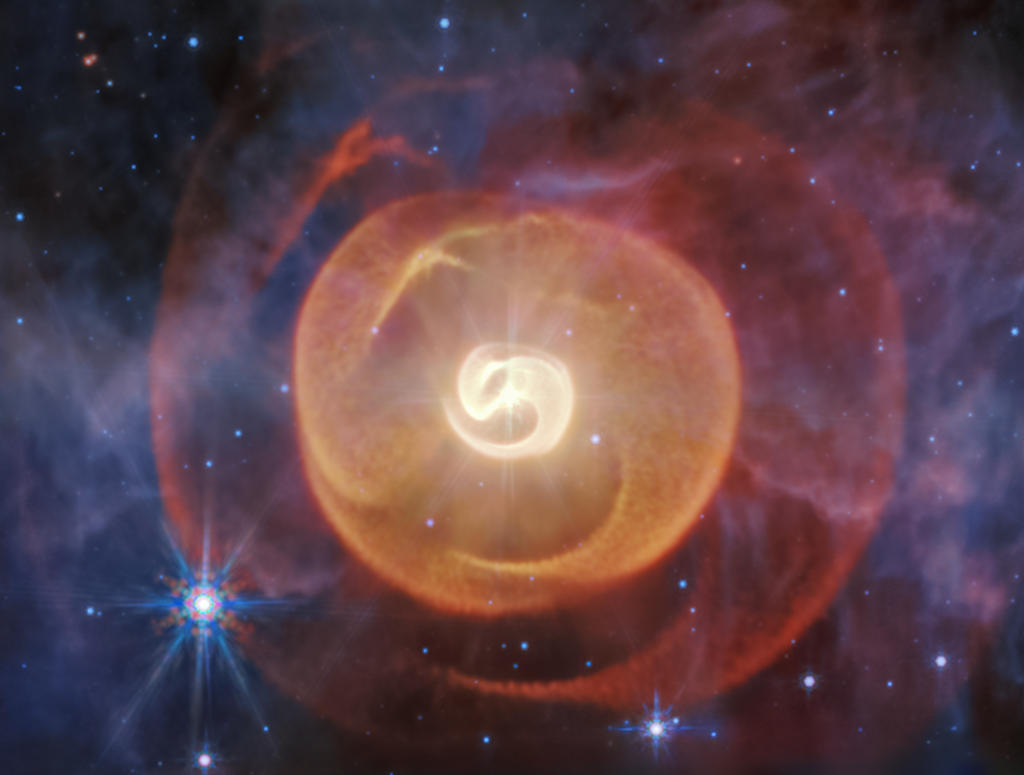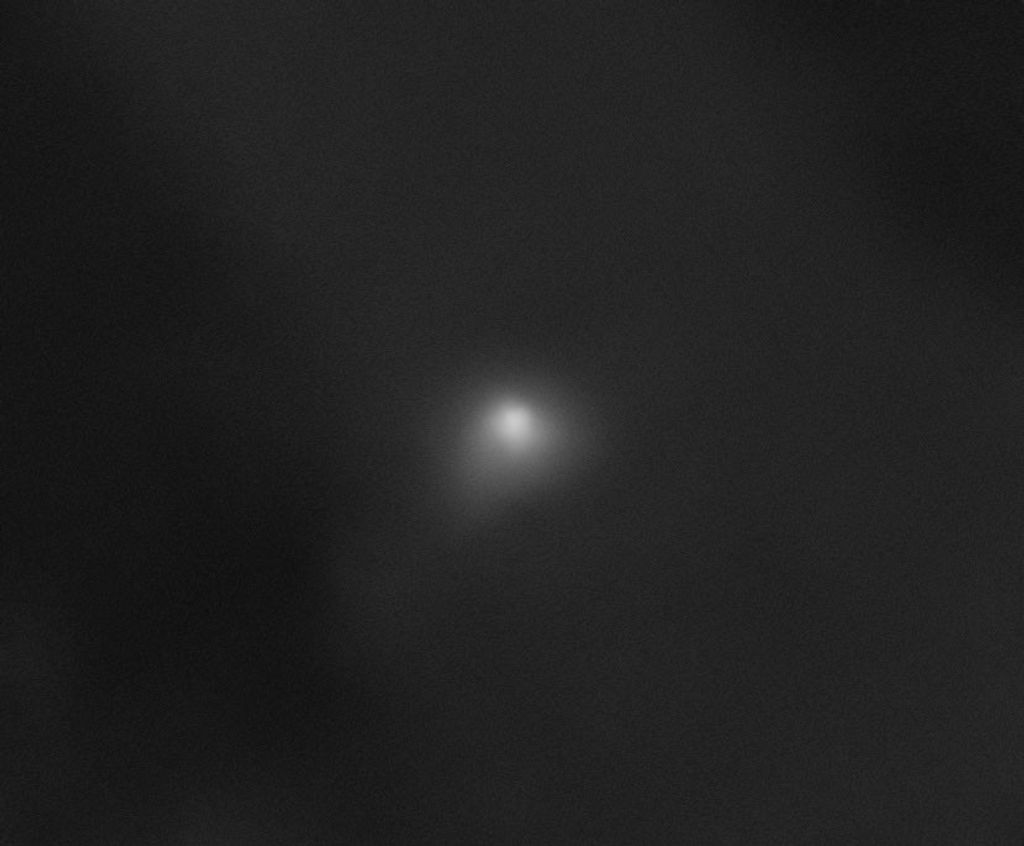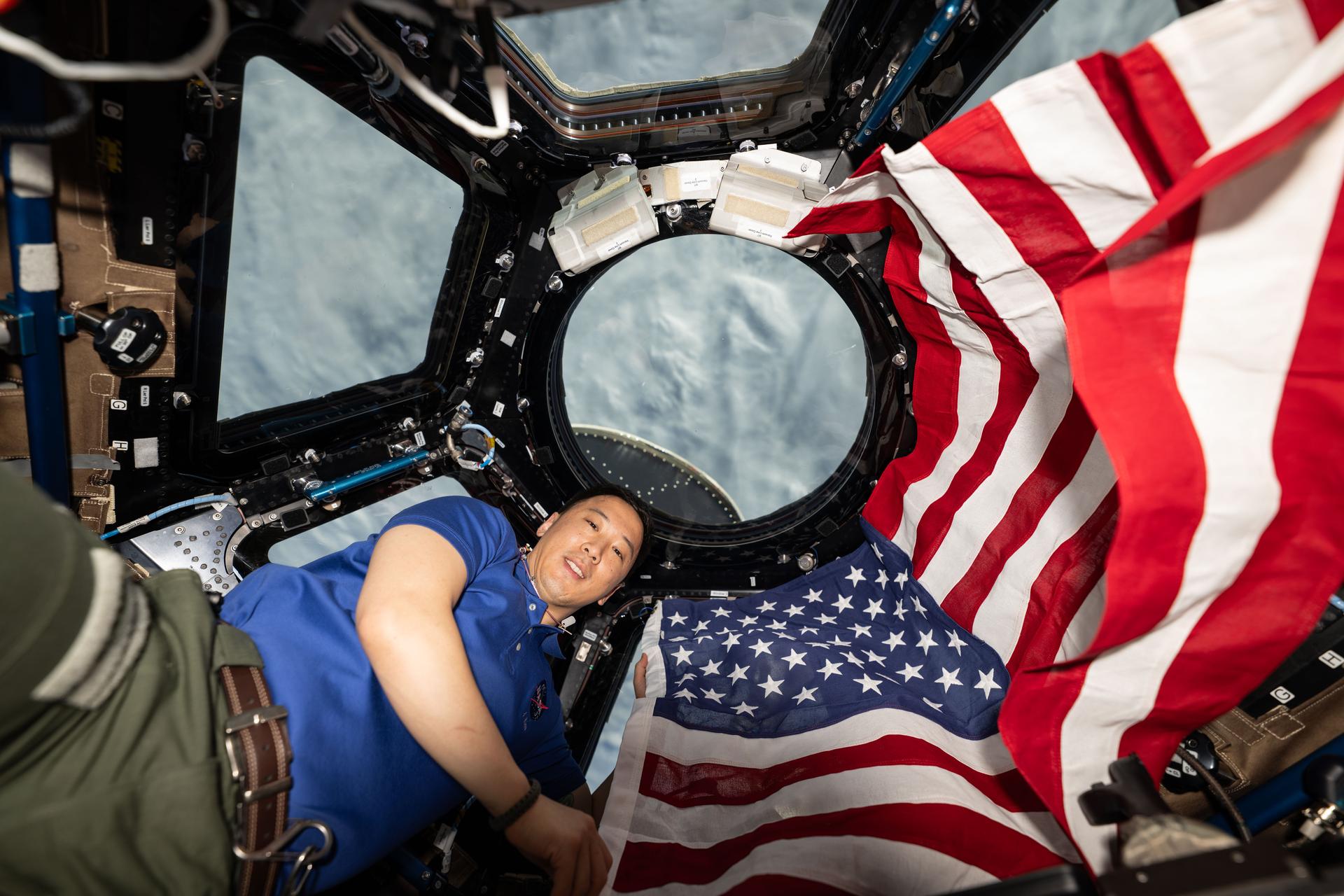1 min read
Simulated Infrared Images from Webb and Hubble
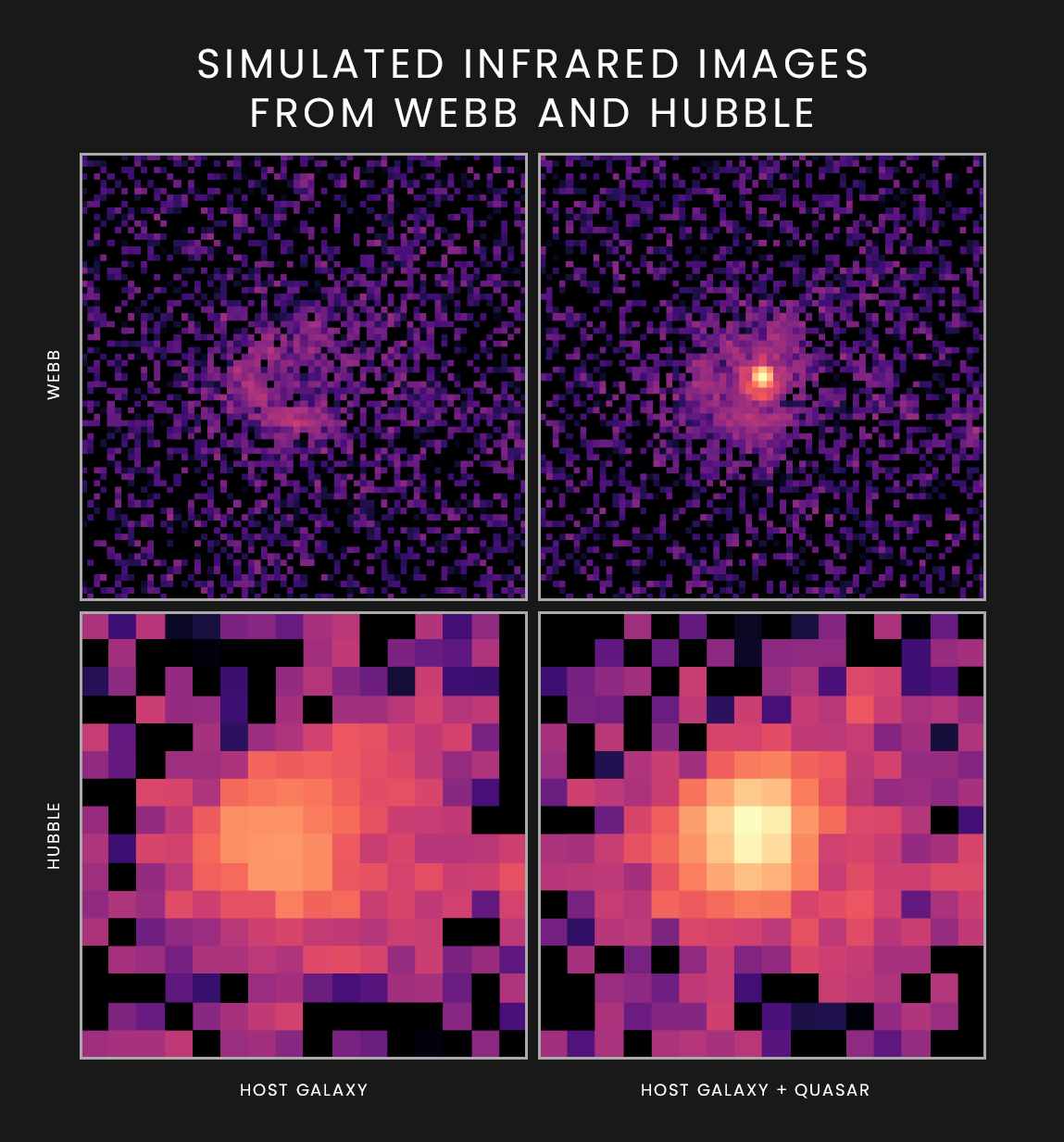
These simulated images show how a quasar and its host galaxy would appear to NASA’s upcoming James Webb Space Telescope (top) and Hubble Space Telescope (bottom) at infrared wavelengths of 1.5 and 1.6 microns, respectively. Webb’s larger mirror will provide more than 4 times the resolution, enabling astronomers to separate the galaxy’s light from the overwhelming light of the central quasar. The individual images span about 2 arcseconds on the sky, which represents a distance of 36,000 light-years at a redshift of 7.
- Release DateOctober 14, 2020
- Science ReleaseSimulations Show Webb Telescope Can Reveal Distant Galaxies Hidden in Quasars’ Glare
- CreditImage: Madeline Marshall (University of Melbourne)
Related Images & Videos

High-Redshift Quasar and Companion Galaxy (Illustration)
This artist’s illustration portrays two galaxies that existed in the first billion years of the universe. The larger galaxy at left hosts a brilliant quasar at its center, whose glow is powered by hot matter surrounding a supermassive black hole. Scientists calculate that the...
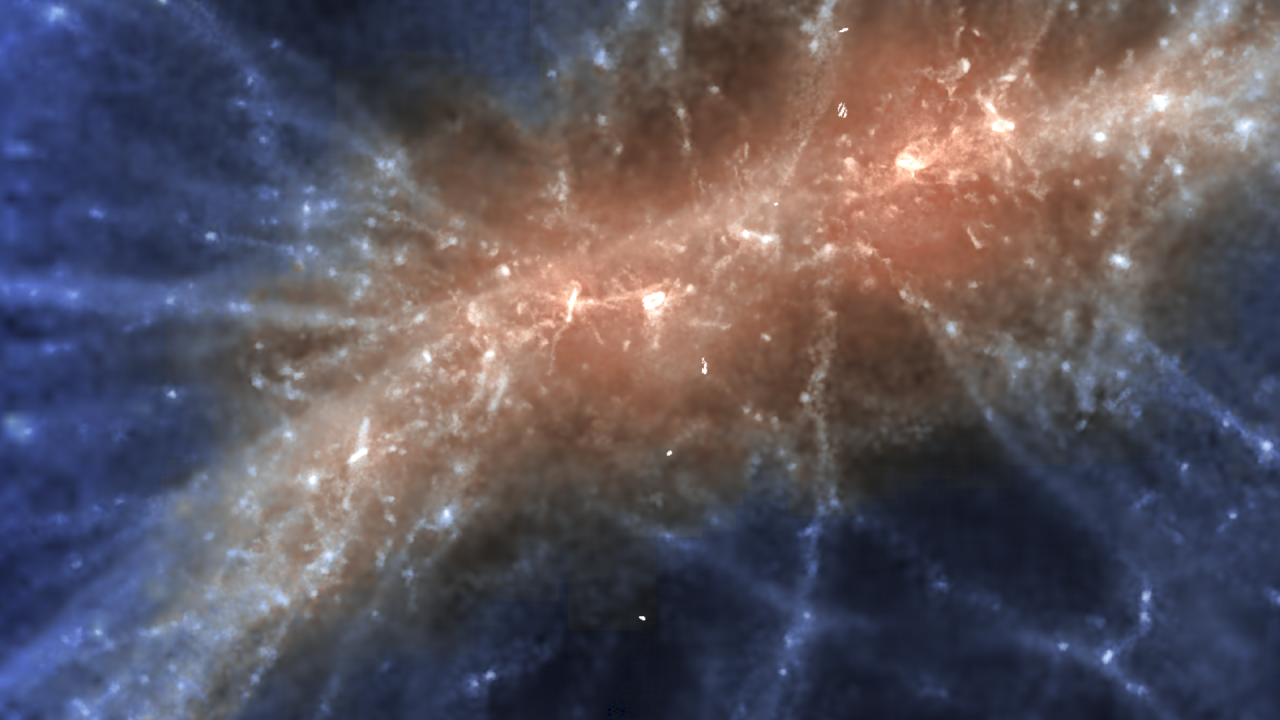
Zoom Into BlueTides Universe Simulation
This video zooms into a highly detailed simulation of the universe called BlueTides. Much like the iconic Powers of Ten video, each step covers a distance 10 times smaller than the previous one. The first frame spans about 200 million light-years while the fourth and final frame...
Share
Details
Last Updated
Aug 28, 2025
Contact
Media
Laura Betz
NASA’s Goddard Space Flight Center
Greenbelt, Maryland
laura.e.betz@nasa.gov
Image Credit
Madeline Marshall (University of Melbourne)

